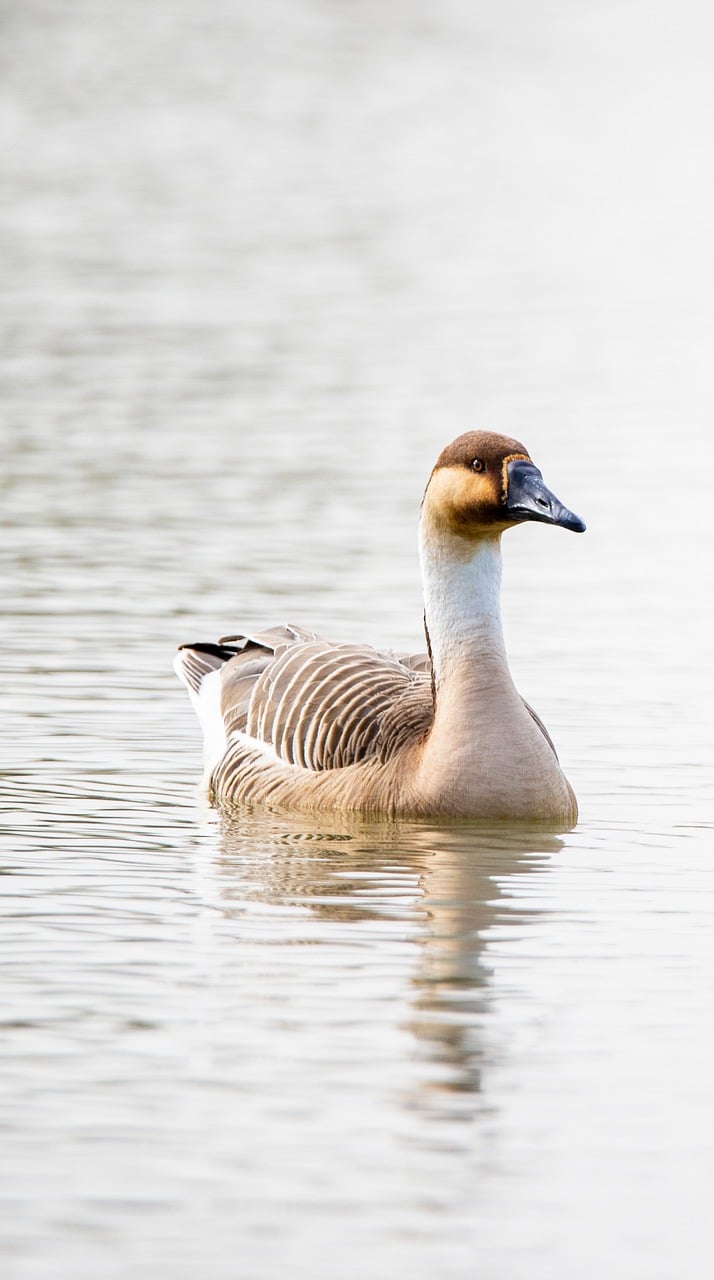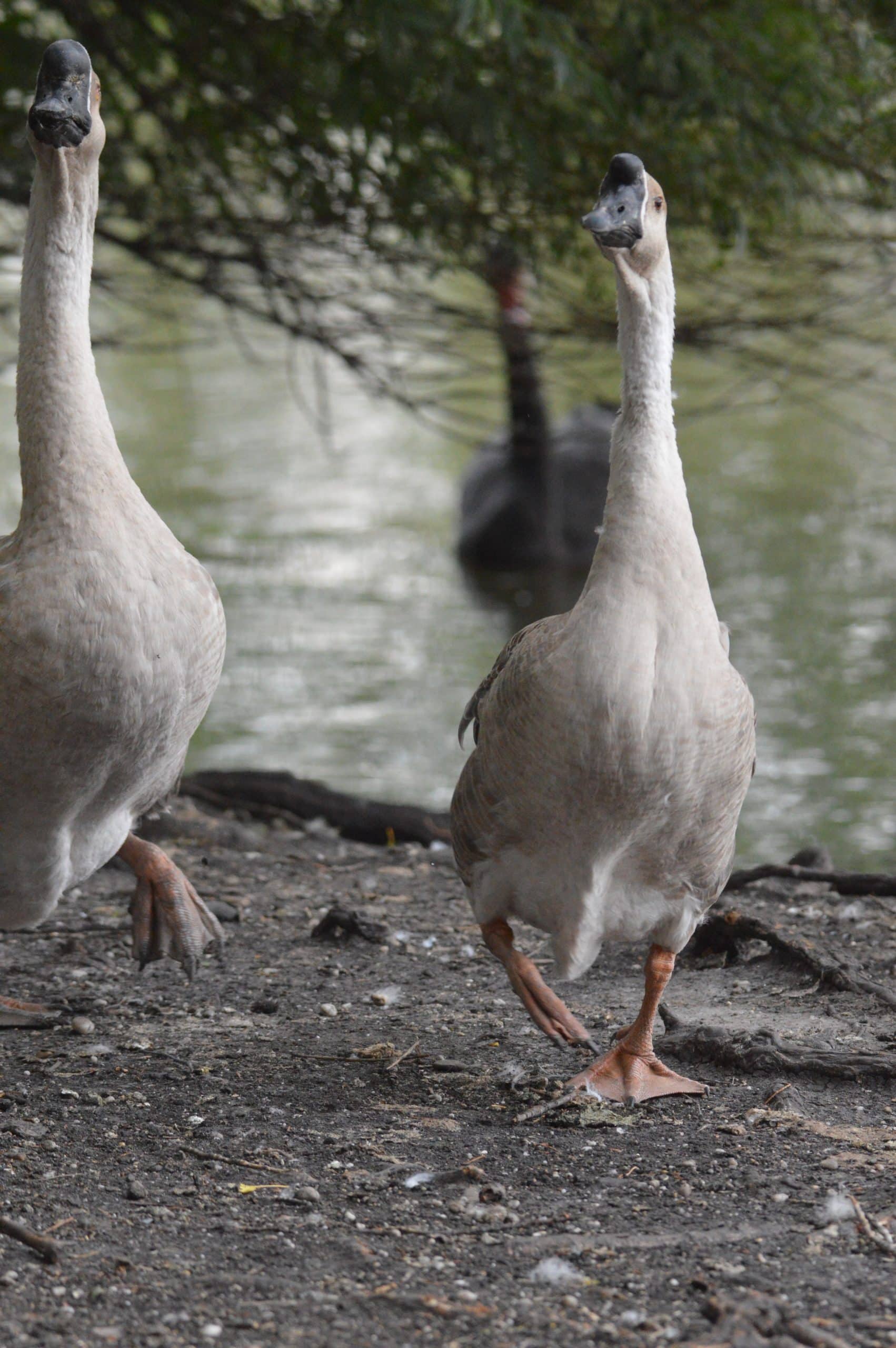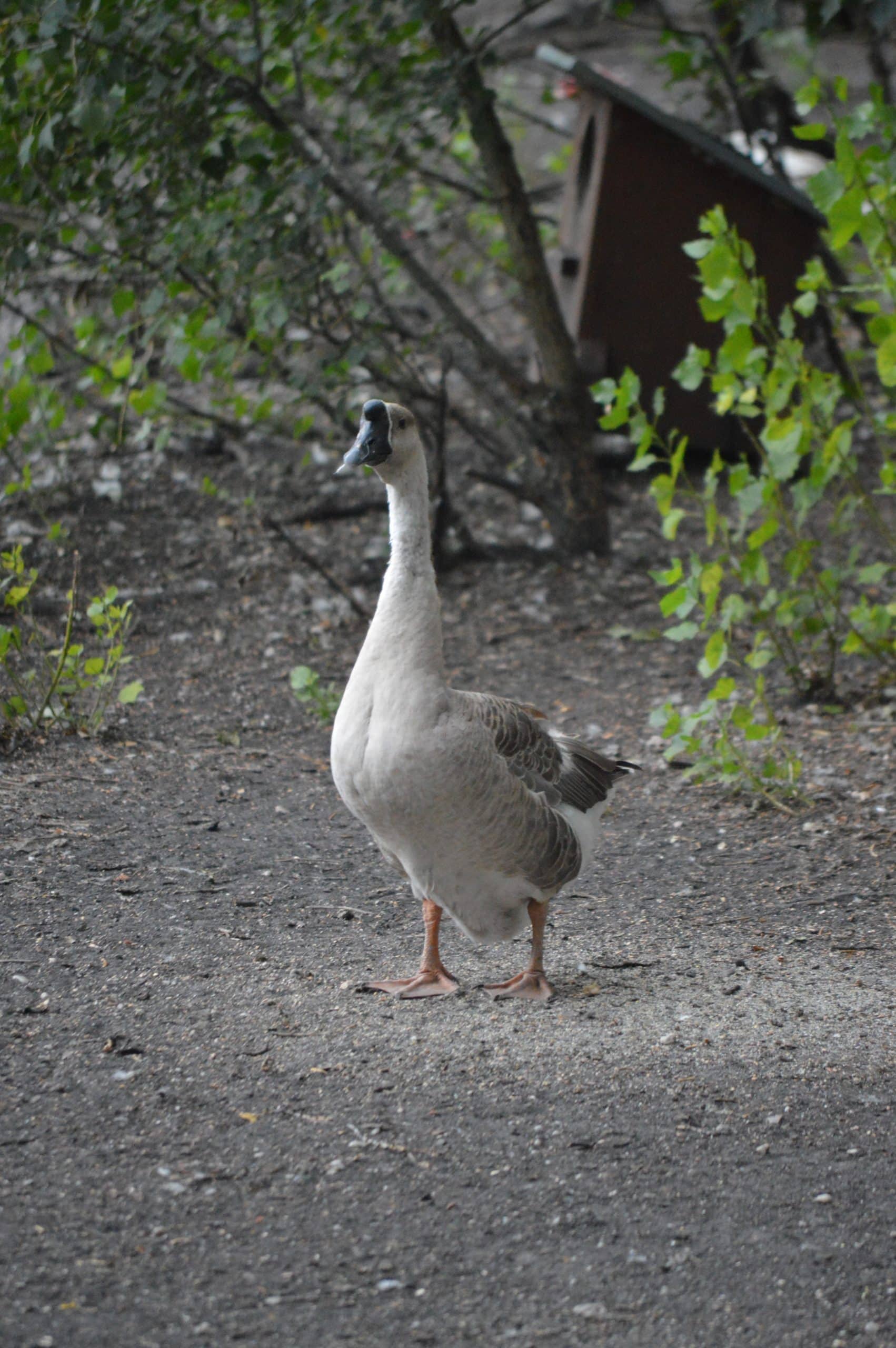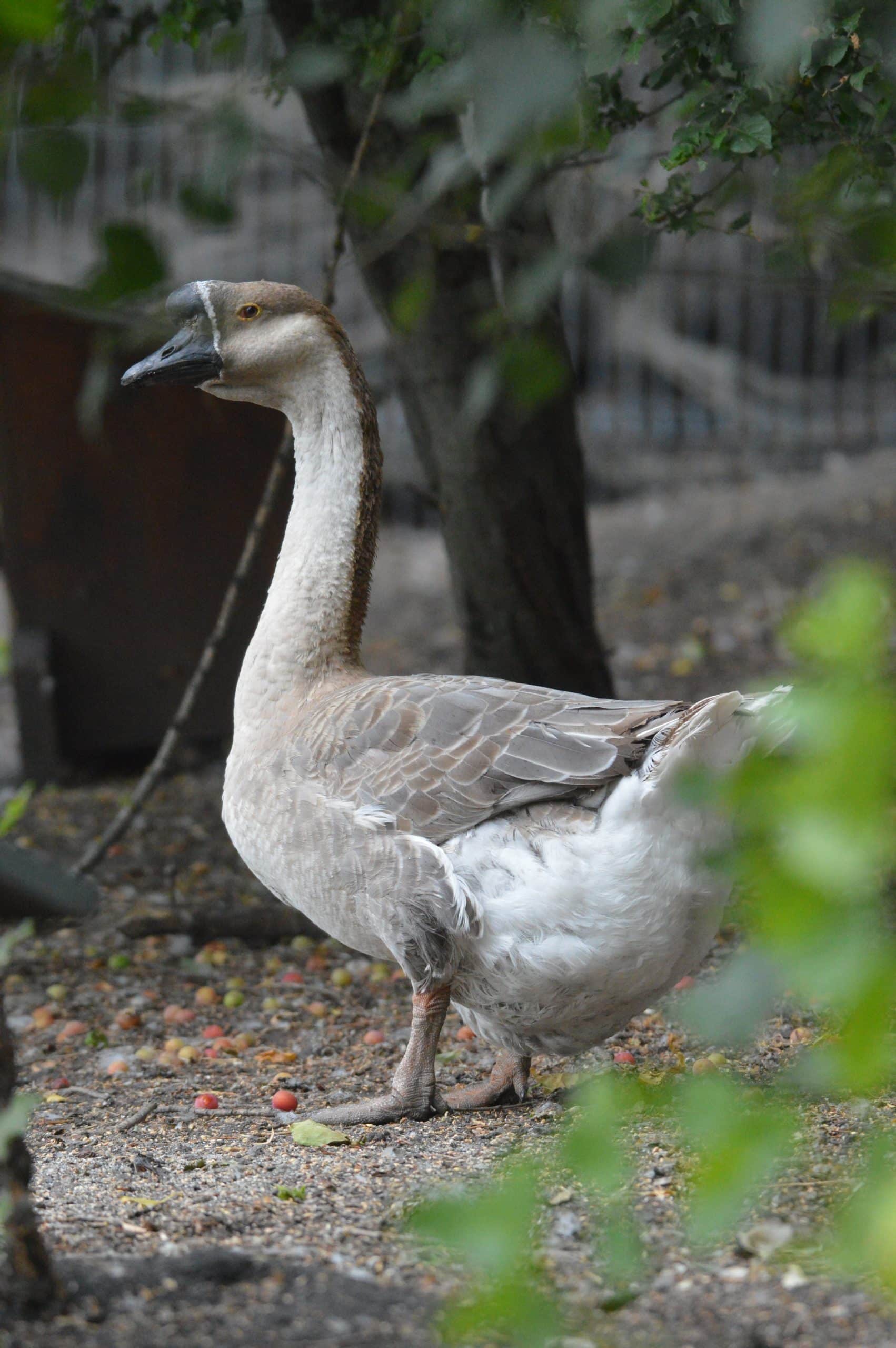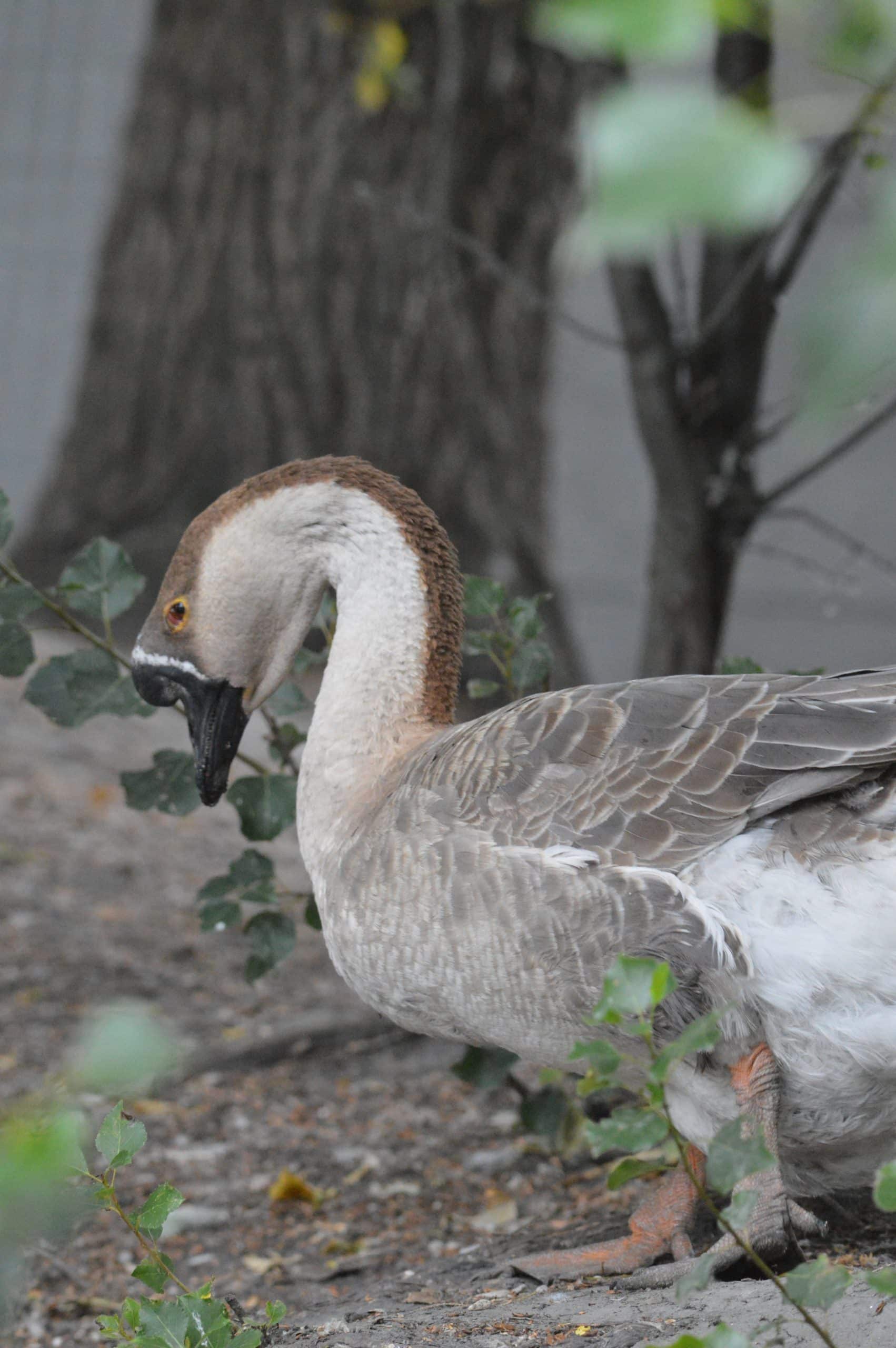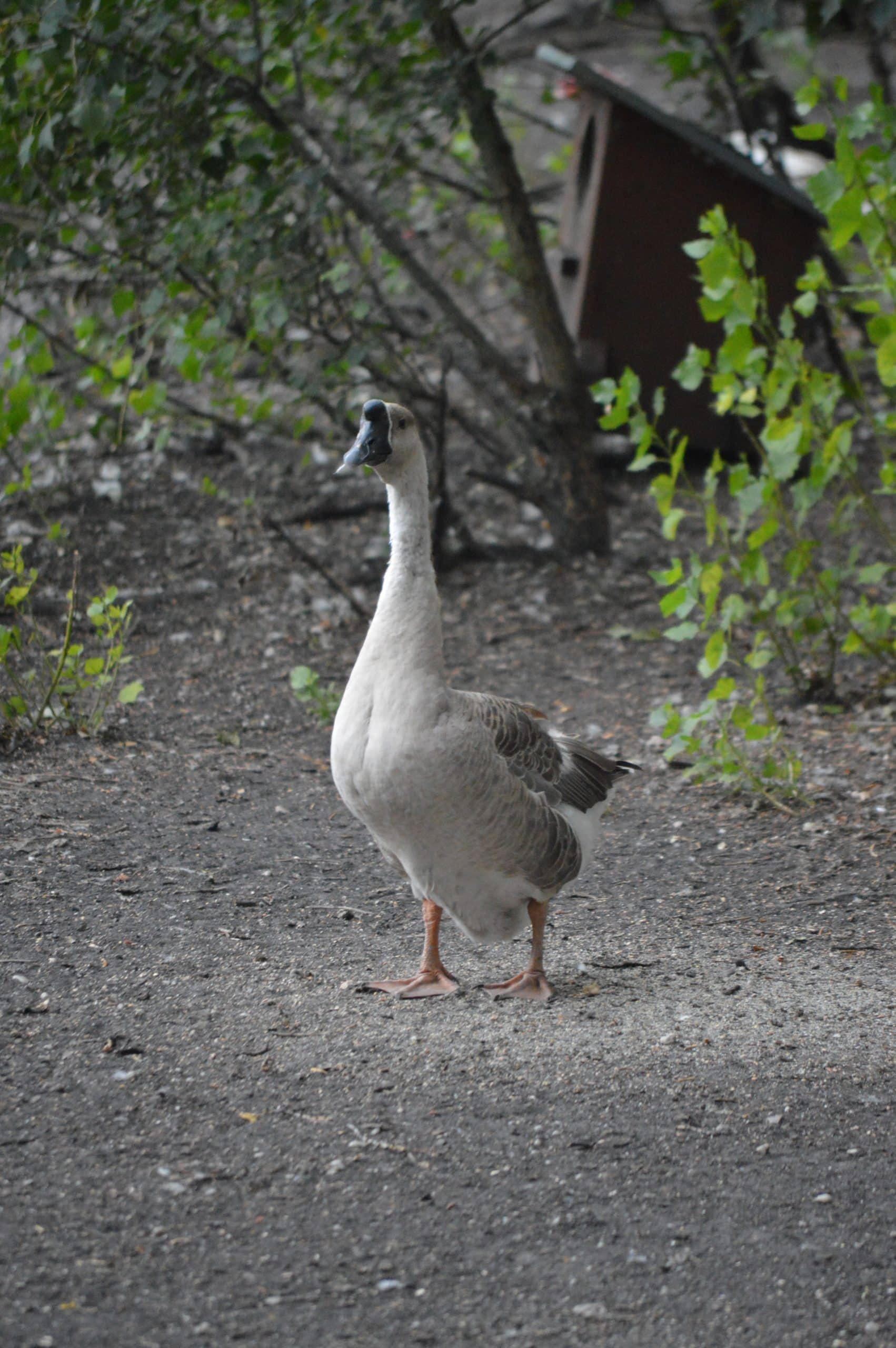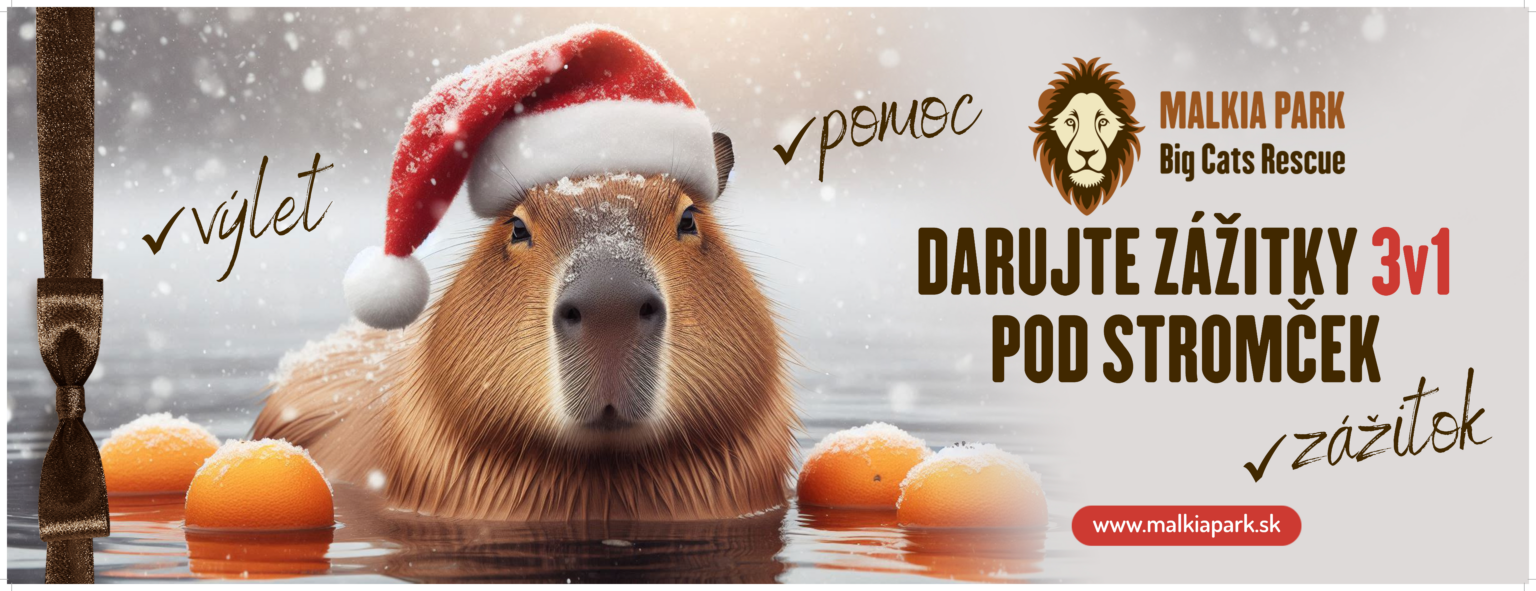The colour of the feathers is brown to white. In brown colouration, it is typical that the upper part of the body from the beak to the end of the tail is chestnut-brown with white edging of the large feathers, while the lower part of the body is significantly paler to greyish with a clear border. In flight, the wings look dark, with no noticeable pattern. The long, heavy beak is completely black. The legs are orange like in the most of its relatives.
The young are more matte than adult birds and they lack the white base and dark stripes on the underside of the body.
It inhabits steppe to taiga and mountain valleys near fresh water. Outside the breeding season, it forms small flocks or lives in pairs. In winter, it grazes on flats and stubble fields, sometimes far from water. The birds return from their wintering grounds around April and the breeding season starts soon afterwards. It nests near marshes and other wetlands. It lays its eggs in a shallow plant nest placed directly on the ground, often on a small mound to keep it dry. The young are born feathered, they can see and are able to move.
In Asia, it has been bred as a domesticated Chinese goose for thousands of years. It was introduced to Europe as a game bird.
As a breed it is very fertile, with most geese not retaining the instinct to brood and raise their young.
